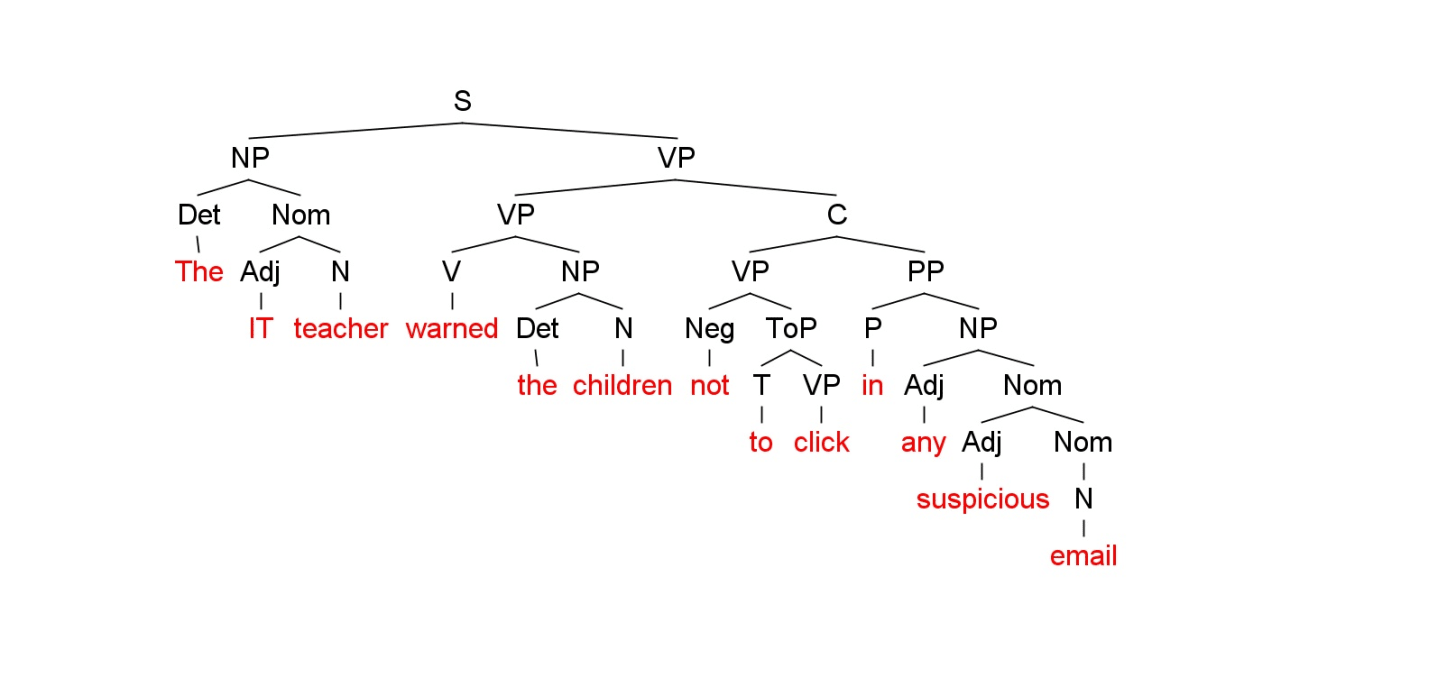Language is one of humanity's most remarkable achievements, serving as the foundation for communication, thought and culture. Whether you're a student beginning your journey in linguistics or simply curious about how language works, understanding its core components provides valuable insight into this complex system that shapes our daily lives.
The Building Blocks of Language
Linguists have identified five fundamental areas that together form the complete picture of how language operates. Each area focuses on a different aspect of linguistic structure and function, yet they all work together seamlessly when we speak, listen, read or write.
Syntax: The Architecture of Sentences
Syntax governs how we arrange words to create meaningful sentences. It's the grammatical framework that determines whether a sentence makes structural sense, regardless of its actual meaning. For example, "The colourless green ideas sleep furiously" follows English syntactic rules perfectly, even though it's semantically nonsensical. Something we often see explored in poetry.
Syntax includes rules about word order, sentence structure, and how different parts of speech relate to one another. In English, we typically follow a Subject-Verb-Object pattern, while other languages may arrange these elements differently. Understanding syntax helps explain why "Dog the bit man the" feels wrong to English speakers, even though all the words are familiar.

Semantics: The Universe of Meaning
While syntax provides the structure, semantics fills it with meaning. This area of study examines how words, phrases, and sentences convey ideas and concepts. Semantics operates at multiple levels, from the meaning of individual words to the complex relationships between concepts in longer texts.
Consider the difference between "The bank is steep" and "The bank is closed." The word "bank" has multiple meanings, and semantics helps us understand how context determines which meaning applies. Semantic study also explores how meanings combine when words come together, why some combinations work while others create confusion, and how language can express abstract concepts and relationships.
A particularly rich area of semantic study involves metaphorical language use, such as how sports terminology translates into workplace contexts. When we use phrases like "tackle this problem" or describe an idea as a "home run," we're demonstrating how meanings can transfer systematically from one conceptual domain to another. However, this metaphorical usage quickly intersects with pragmatic considerations, understanding not just what these metaphors mean, but when and how they're socially appropriate to use in professional or cultural settings.
Phonology: The Sound Foundation
Phonology examines the sound systems that underlie spoken language. Every language has its own inventory of sounds and rules for how these sounds can be combined. This isn't just about individual sounds, but about patterns, which sounds can appear together, how sounds change in different environments, and what makes certain sound combinations feel "natural" to speakers of a particular language.
For instance, English speakers find it difficult to pronounce words that begin with "ng" because this sound combination doesn't occur at the beginning of English words, though it's perfectly normal in other languages. Phonology also explains phenomena like why "cats" ends with an "s" sound while "dogs" ends with a "z" sound, even though both are spelled with the same letter.
Morphology: The Art of Word Building
Morphology focuses on how words are constructed from smaller meaningful units called morphemes. Think of morphemes as the building blocks of words, some can stand alone (like "cat" or "run"), while others must attach to other morphemes (like the "-s" that makes plurals or the "-ed" that indicates past tense).
Understanding morphology reveals the systematic nature of word formation. When we encounter a new word like "unfriendliness," we can break it down into familiar parts: "un-" (not) + "friend" (base word) + "-ly" (adverb marker) + "-ness" (noun marker). This system allows languages to create virtually unlimited vocabulary from a finite set of building blocks.
It's worth noting that morphology operates within individual language systems, while the historical relationships between language families, such as how Latin evolved into the Romance languages, or how Sanskrit influenced modern languages like Hindi, falls more into the realm of historical linguistics and etymology. These evolutionary relationships show us how morphological patterns themselves can change and adapt across generations and cultures.
Pragmatics: Language in the Real World
Pragmatics bridges the gap between what we literally say and what we actually mean. It's the study of language in context, examining how situation, culture, and social relationships influence communication. Pragmatics explains why "Can you pass the salt?" is understood as a request rather than a yes-or-no question, and why the same words can have different meanings in different situations.
This area encompasses much more than simple contextual interpretation. Pragmatics includes the study of power dynamics in conversation, how authority, social status, and hierarchy shape the way people speak and are spoken to. Consider how differently someone might address their boss versus their friend, or how linguistic choices can reinforce or challenge social hierarchies.
Discourse analysis, another crucial component of pragmatics, examines how language functions in extended interactions and texts. It reveals how speakers negotiate meaning, establish authority, build relationships and navigate complex social situations through their linguistic choices. This includes understanding how interruptions, turn-taking, topic control and even silence can communicate power relationships and social positioning.
Pragmatics also covers concepts like politeness strategies, implied meanings, conversational rules, and the subtle ways language can include or exclude, elevate or diminish. When someone says "It's getting late," they might literally be commenting on the time, or they might be exercising conversational control to end an interaction, a pragmatic move that could reflect their social position or relationship dynamics.

Human vs. Artificial Language Processing
The study of these linguistic areas has taken on new significance with the rise of artificial intelligence and large language models (LLMs). Interestingly, different aspects of language present varying challenges for human versus artificial systems.
Where AI Excels: Modern LLMs demonstrate remarkable proficiency in syntax and semantics. They can generate grammatically correct sentences with sophisticated structures and handle complex semantic relationships with impressive accuracy. AI systems can often match or exceed human performance in tasks involving semantic understanding, such as reading comprehension, translation, and even creative writing that requires semantic coherence.
Uniquely Human Challenges: Phonology remains distinctly biological, the physical production and perception of speech sounds is deeply tied to human anatomy and neural processing. While AI can process audio, the embodied experience of articulation and the subtle phonological intuitions that native speakers possess remain fundamentally human.
Pragmatics presents a mixed picture. While LLMs can handle many contextual interpretations impressively, they often struggle with the deeply social and experiential aspects of pragmatic understanding. This is particularly evident in areas like power dynamics, discourse analysis, and social hierarchy recognition. AI may miss subtle cues about authority relationships, fail to recognise when language is being used to establish dominance or submission, or struggle to understand how cultural context shapes the social implications of linguistic choices. The nuanced ways that humans navigate complex social relationships through language, understanding unspoken hierarchies, recognising microaggressions, or interpreting the political dimensions of discourse, remain challenging for artificial systems.
Morphology falls somewhere in between. AI systems can learn morphological patterns effectively, but humans bring an intuitive creativity to word formation that stems from our embodied experience with language.
The Building Blocks of Language
These five areas don't operate in isolation, they work together to create the rich, flexible system we call language. A single sentence involves syntactic structure, semantic content, phonological patterns, morphological elements, and pragmatic context all at once. When we say "I'm running late," we're simultaneously following English word order rules, combining meaningful morphemes, producing recognisable sounds, and communicating urgency within a social context.
Why This Matters
Understanding these fundamentals illuminates how remarkable our everyday language use truly is. Every time we speak or understand speech, we're unconsciously coordinating multiple complex systems with extraordinary precision. For language learners, this framework provides a roadmap for systematic study. For educators, it offers a comprehensive approach to language instruction. For anyone interested in human communication, it reveals the sophisticated cognitive machinery that makes our social world possible.
This comparison reveals something profound about language itself: it exists at the intersection of systematic patterns and lived experience. While AI demonstrates that many aspects of language can be learned through pattern recognition and statistical relationships, the full richness of human language still requires the kind of embodied, social, and experiential knowledge that comes from being human.
Language is simultaneously rule-governed and creative, systematic and flexible, universal and culturally specific. By examining it through the lenses of syntax, semantics, phonology, morphology, and pragmatics - and understanding how both humans and artificial systems approach these areas - we gain appreciation for both language's complexity and its elegance, as well as the remarkable capacity that allows humans to master such an intricate system so effortlessly.












